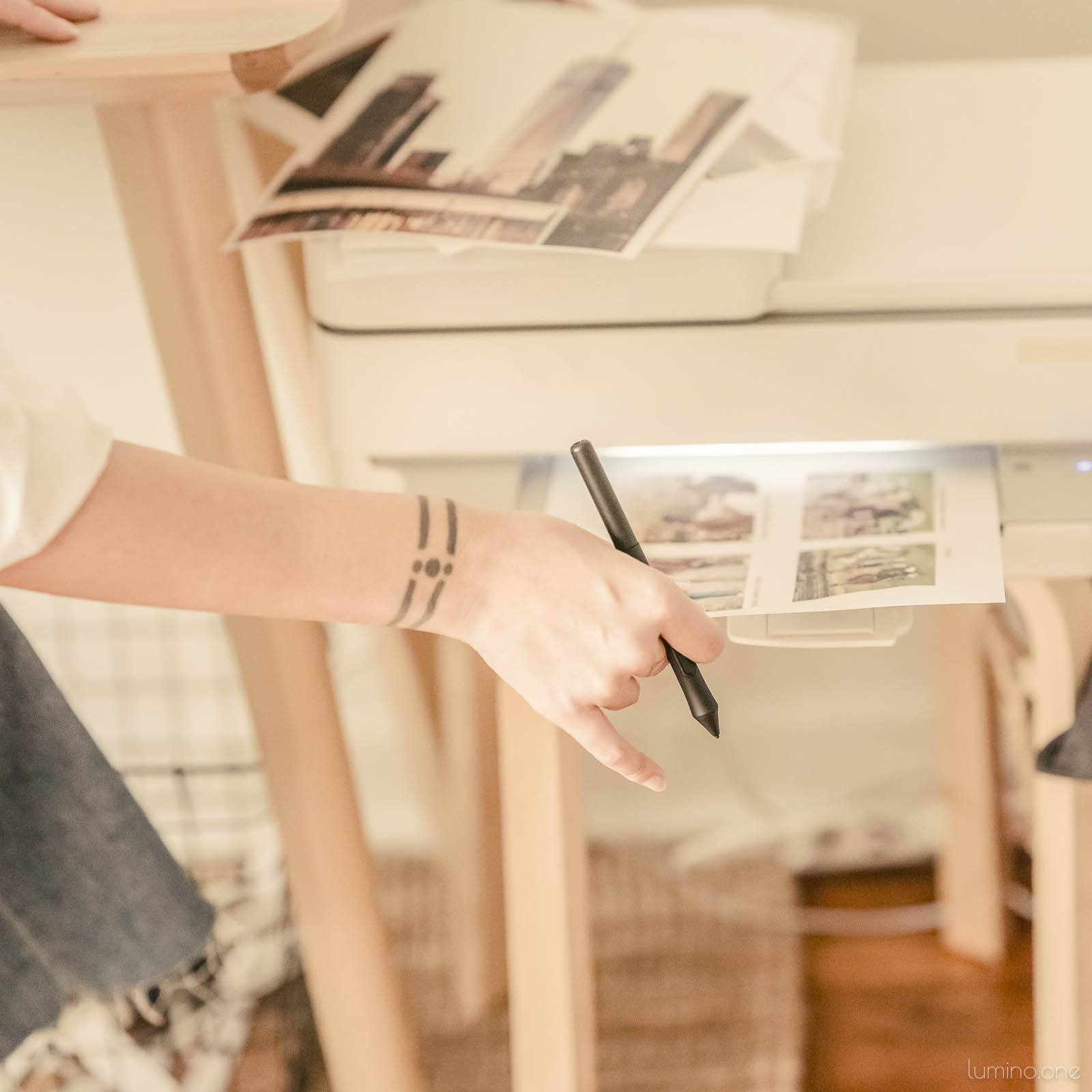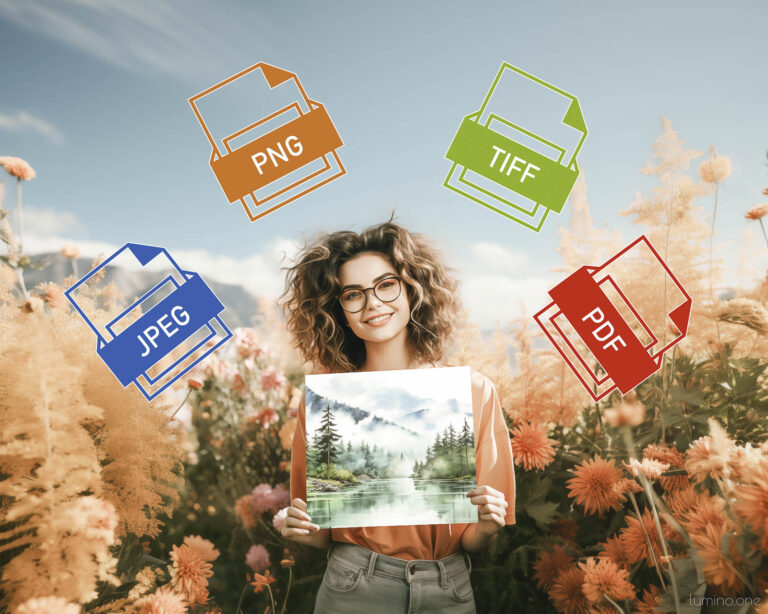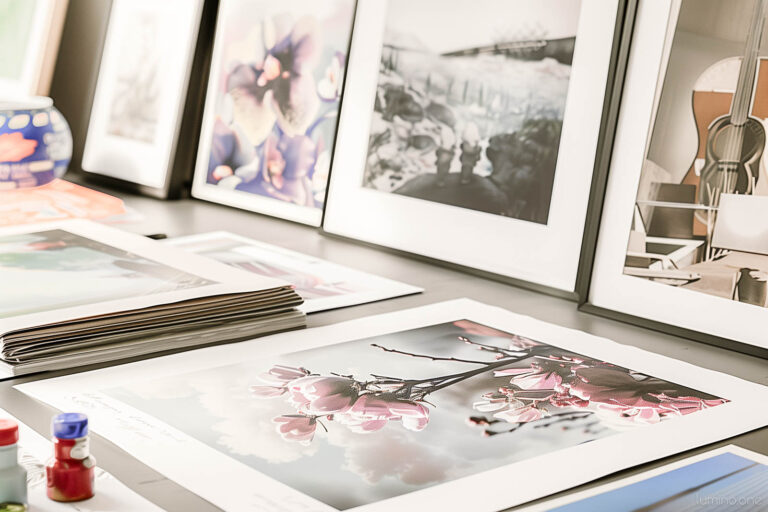Printing digital art can be a great way to bring your favorite images to life and display them in your home or office. In this guide, we’ll cover everything you need to know about aspect ratios, sizes, paper types, and where to print your digital art.
Aspect Ratios and Sizes for Art Printing
As we delve into the world of transforming homes with art, grasping the concept of aspect ratios and print sizes is crucial. It’s like a secret ingredient that, when understood, can turn a simple image into a stunning piece of wall art. Let’s unravel this secret and guide you through selecting the perfect print for your home.
1. Aspect Ratios: The Foundation of Your Print
- Understanding Aspect Ratios: Simply put, aspect ratio is the relationship between the width and height of your image. It is expressed as a ratio, such as 3:2 or 16:9. For example, an image that has a 2:3 aspect ratio may have a width of 2 inches and a height of 3 inches, but it can also have a width of 4 inches and a height of 6 inches.
- Common Ratios: You’ll encounter ratios like 4:3 (standard photography) and 16:9 (wide screen). Each aspect ratio can be printed in various sizes, both smaller and larger. For example, a 2:3 aspect ratio can also be printed in sizes like 6×9 or 12×18. Each ratio offers a different perspective, like looking through various windows, each with a unique view.
- Relevance to Home Decor: Choosing the right aspect ratio is key. It can impact how a piece fits and looks in your space. For guidance on proportions in home decor, check out the article, “How Big Should Artwork Be Above a Couch? Find the Perfect Proportions”.
2. Print Sizes: Matching Art with Space
- Size Matters: The size of your print should harmonize with your room. Too small, and it gets lost; too big, and it overwhelms.
- Popular Sizes: Ranging from the intimate 8″x10″ to the grand 24″x36″, each size serves a purpose. Smaller prints add subtle charm, while larger ones create bold statements.
- Picking the Right Size for the Wall: When it comes to sizes, it’s important to consider where you’ll be displaying your printed art. If you’re planning to hang it on a wall, you’ll want to choose a size that is appropriate for the space. The right size can also affect the perception of your room’s size. For insights into this, explore “Creating Illusions: How Wall Art Can Make a Room Look Bigger”.
In essence, understanding aspect ratios and sizes is more than a technical step – it’s a journey towards creating a home that reflects your personality and style. I’ve put together an in-depth guide to choosing the perfect wall art size for your space that explains all the nuances, and I recommend checking it out.
| Print Size (in inches) | Aspect Ratio |
| 4×6 | 2:3 |
| 5×7 | 5:7 |
| 8×10 | 4:5 |
| 11×14 | 5:7 |
| 16×20 | 4:5 |
| 18×24 | 2:3 |
| 24×36 | 2:3 |
Printing Options for Digital Art
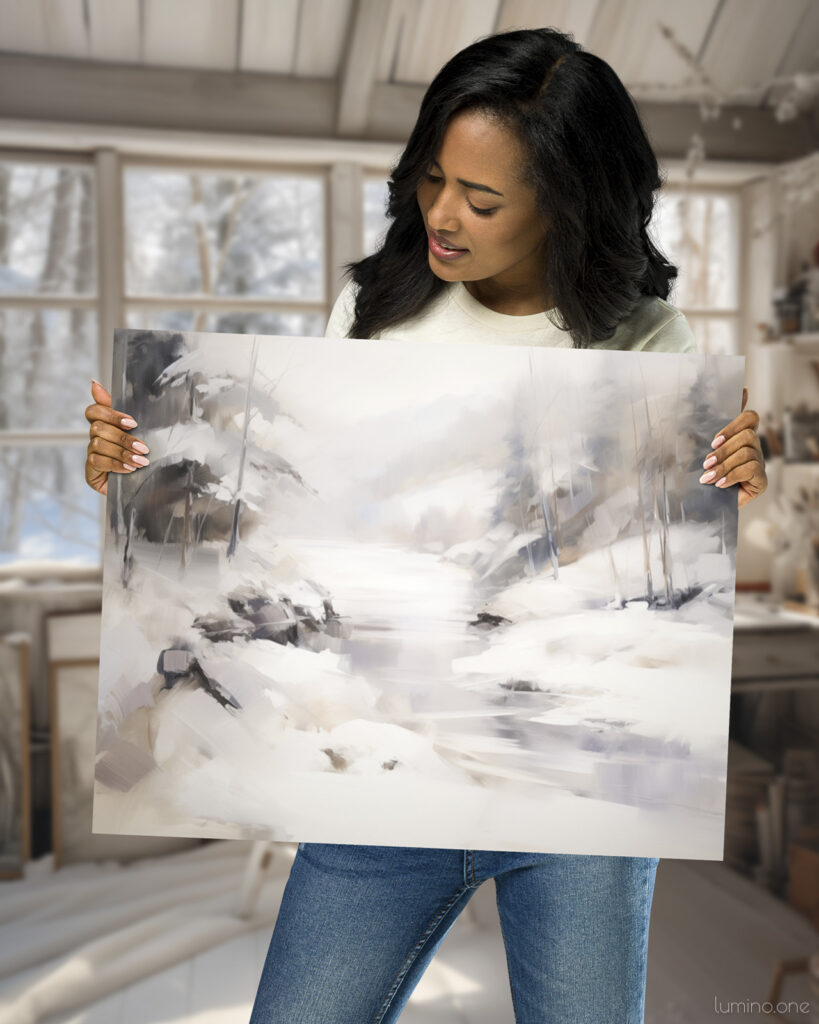
Embarking on the journey of printing your digital art can be as exciting as creating it. But where do you start? Understanding your printing options is key. Whether you’re cozying up in your home office, clicking away online, or stepping into a local store, each choice has its unique flavor. Let’s explore these avenues, ensuring you find the perfect fit for your artful aspirations.
1. At-Home Printing: The Comfort of Your Own Space
If you have a high-quality printer and the right paper, you can print your digital art at home. This can be a convenient option if you want to have control over the printing process and save money on printing costs.
However, keep in mind that not all printers are capable of producing high-quality prints. You’ll also need to invest in high-quality paper and ink cartridges to get the best results.
- Pros: There’s a certain charm to printing at home. It offers immediate gratification and total control over the printing process. You’re the captain of the ship, from selecting the paper to the final print.
- Cons: However, the limitations of your home printer can be like trying to fit a square peg in a round hole. Not all printers can handle large formats or specialized materials.
- Best For: Small projects or when you’re in a pinch for time.
2. Online Printing Services: Convenience at Your Fingertips
There are many online printing services that allow you to upload your digital art and have it printed and shipped to your door. Some popular options include Shutterfly, Snapfish, and Nations Photo Lab.
- Pros: Online services are a treasure trove of options. They can handle a variety of sizes, materials, and special finishes, like a chef ready to cater to your every whim.
- Cons: The downside? You can’t physically touch or inspect the product before it arrives. It’s a bit like ordering a cake without tasting the frosting first.
- Best For: When you need professional-quality prints or are experimenting with different materials.
3. In-Store Printing: Personal Touch and Expertise
Many office supply stores and print shops offer in-store printing services. This can be a good option if you need your print quickly or if you want to see and touch different paper options before making a decision.
In-store printing can be more expensive than online printing, and you’ll need to factor in the time it takes to travel to the store and wait for your print to be ready.
Here are some of the most common in-store printing options in the US, Canada, and Europe:
- Walmart Photo Center
- CVS Photo
- Walgreens Photo
- Staples Print & Marketing Services
- FedEx Office Print & Ship Center
- Office Depot/OfficeMax Print & Copy Services
- Costco Photo Center (US and Canada)
- Shoppers Drug Mart (Canada)
- London Drugs (Canada)
- Boots (UK)
- Jessops (UK)
- Snappy Snaps (UK)
- HEMA (Europe)
- CEWE (Europe)
- Fotokoch (Germany)
- MediaMarkt (Germany)
- Pros: Walking into a print store is like entering a world of possibilities. The experts there can offer advice tailored to your specific needs, guiding you through textures, sizes, and quality options.
- Cons: This option might be more costly, and it requires you to physically visit the store, which can be a bit of a trek.
- Best For: Those looking for a personal touch and professional guidance.
In essence, your choice of printing method should align with your project’s needs, your personal preferences, and the level of quality you’re aiming for. Whether it’s the convenience of an online service, the control of home printing, or the expertise of an in-store experience, each path leads to a beautiful destination: your art, ready to be admired and cherished.
Paper Types for Printing Digital Art
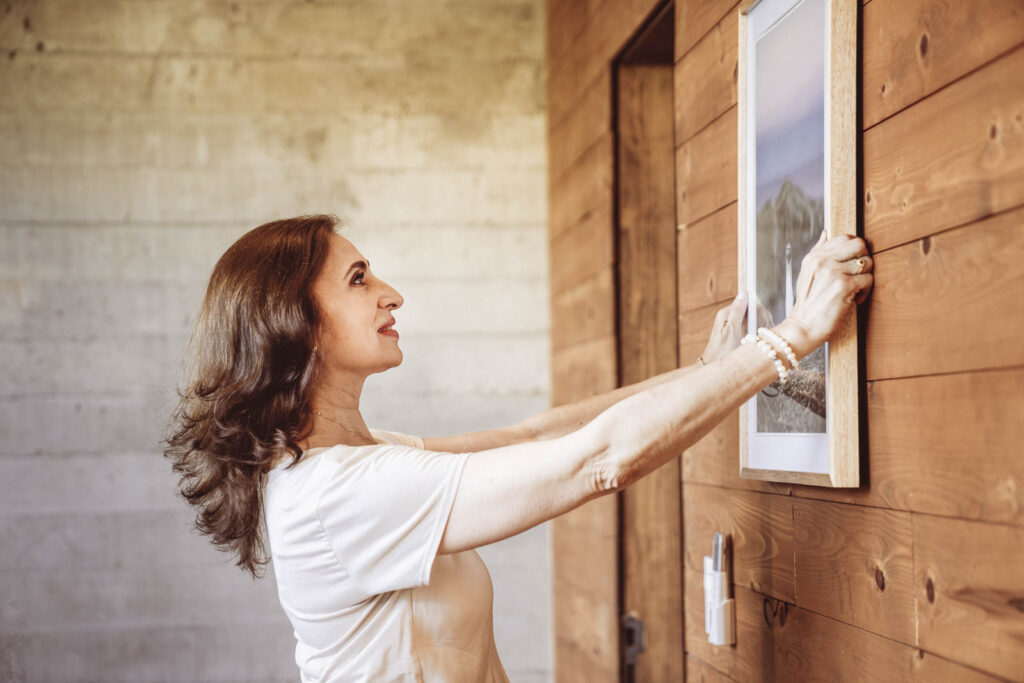
When embarking on the journey of printing your wall art, the choice of paper is not just a decision, it’s an art in itself. The type of paper you select breathes life into your digital art, transforming pixels into a tangible piece that you can touch, feel, and even smell.
1. The Classic Matte – A Timeless Choice
- Look and Feel: Matte paper, with its non-reflective surface, offers a classic, elegant finish. It’s like the quiet, unassuming friend who doesn’t need the spotlight to be noticed. The colors on matte paper are more subdued, giving your art a sophisticated, understated look.
- Best For: This paper is a go-to for black and white prints or designs where text is a key element. It also works well for digital drawings or illustrations. It’s like wearing a black tuxedo or a little black dress – you can never go wrong with it.
2. Glossy Paper – For the Bold and the Beautiful
- Look and Feel: Think of glossy paper as that person at the party who is full of life and loves the spotlight. Its shiny surface reflects light, making colors pop and images appear more vibrant. It’s like adding a sparkle to your art.
- Best For: Perfect for colorful, high-contrast art or fine art photography. It’s the paper of choice when you want to turn heads and make your artwork shout, “Look at me!”
3. Textured Paper or Canvas – Adding a Dimension of Feel
- Look and Feel: Imagine running your fingers over a surface that tells a story. Textured paper adds a physical dimension to your prints, creating an experience that goes beyond just visual. It’s like jazz music for the eyes.
- Best For: Ideal for art that mimics traditional mediums like watercolors or oil paintings. It’s about adding a layer of authenticity and charm.
In the world of digital art printing, paper is more than just a backdrop; it’s a character in your story. Each type holds its unique personality and plays a pivotal role in bringing your digital creations to life. Whether it’s the understated elegance of matte, the vibrant energy of glossy, or the authentic touch of textured paper and canvas, your choice sets the stage for how your art is perceived and experienced.
Remember, the paper you choose is the unsung hero of your print. It’s the silent partner that either elevates your art to new heights or lets it quietly shine in its own light. So, take a moment, think about the story you want to tell, and let the right paper type narrate it beautifully.
Conclusion: Elevating Your Home with Personalized Wall Art
In wrapping up, remember that printing your own digital art offers a unique and personal way to enhance your living space. Whether it’s a family photo, a beloved landscape, or a striking abstract design, the right print can transform a room. The key is in the details – selecting the right paper, understanding the printing process, and choosing images that resonate with your personal style.
For homeowners exploring this avenue, it’s an opportunity to infuse your home with personal touches that reflect your tastes and memories. Don’t shy away from experimenting with different styles and formats. Whether it’s a glossy finish for a vibrant family photo or a matte finish for a sophisticated art piece, each choice you make adds a layer of personality to your home.
This guide is your first step towards turning blank walls into a gallery of your own stories and experiences. Embrace the process and watch as your living spaces come alive with prints that are more than just decorations; they’re extensions of your personality and cherished moments.

